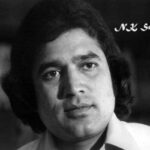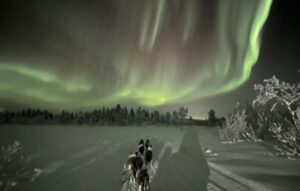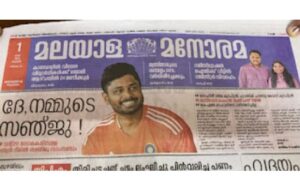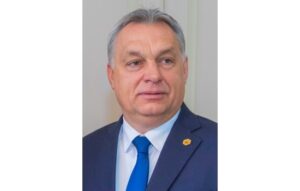The tremendous fighting spirit of the Ukrainians goes back to their Cossack roots
 By Akhil Bakshi
By Akhil Bakshi
Even after over six weeks of battering by the Russian troops, the valorous Ukraine forces are putting up a fierce resistance and stalling the Russian advance. Their president, Volodymyr Zelensky, believes that successful counterattacks might yet turn the tables on Russia. Kyiv hasn’t fallen. Russia’s elite 4th Guards Tank Division is said to have lost a fifth of its tanks – and 15,000 Russian soldiers have been killed, if Ukrainian officials are to be believed. The tremendous fighting spirit of the Ukrainians goes back to their Cossack roots.
The Union of Lublin that led to the merger of the Polish-Lithuanian Commonwealth in 1569 brought peace to Central Europe and resulted in further colonisation of the Ukrainian steppe and expansion of farming. After many centuries, the land now called Ukraine began to export grain – mostly to the Baltic region in the north. Growing affluence attracted the Ottomans who took control of the southern shores of the Crimea.

The Ottoman Empire, with its capital in Istanbul, was a vibrant market for slaves. As their religion prohibited them to enslave Muslims, they sourced their slaves from the north – through the Tatars and nomadic tribes, the remnants of the Golden Horde, who still held sway over the steppe bordering Crimea and southern Ukraine. Ukrainians were the main target of slave-trafficking, followed by ethnic Russians. Anywhere between 1.5 million and 3 million Ukrainians and Russians were sold as slaves to the Ottomans between the 16th and 17th centuries.
For the men there was an abundance of unpaid jobs toiling in the fields or on galleys. Women enjoyed employment as domestics, while ladies with room-grabbing presence were taken into the joyous harems of the sultans and upper echelons. Roxolana, a Ukrainian girl, became the much-loved wife of Suleman the Magnificent, the high-achieving Ottoman sultan whose memorable rule lasted from 1520 to 1566. Their son later became the sultan and ruled as Selim II.
The slave raids of the Tatars have left deep scars in Ukrainian national memory. Ukrainian folk songs still lament the fate of the captives, narrate their attempts to escape from slavery, and eulogise men who helped free the slaves. These folk heroes who fought the Tatars and rescued the slaves were the Cossacks.
The term Cossack initially referred to small bands of men who camped away from the steppe settlements of their tribes, living off the land and swooping down to capture the passing merchandise of unprotected merchants who travelled on the several trade routes that crisscrossed the steppes. From the steppe robbery the Cossack freebooters enjoyed a bonanza of precious stones, silk, furs, spices and other luxury items meant for the posh ends of the markets in Poland and Muscovy. Their growing prosperity attracted others to join them. Soon their ranks were swelled by peasants – a blend of all people, but mostly Ukrainians – escaping slavery, punishment, starvation, creditors and taxation. Recognising their nuisance value, the Lithuanian border officials gathered the dispersed Cossacks and began to organise them into a paramilitary force to defend themselves against the raids of Tatars and Ottomans.

Cossacks were mercenaries. Some even served in the army of Ivan the Terrible, a Russian czar. They were all unmanageable and none of them would have passed a loyalty test. Conflict was their culture, and they were on a perpetual campaign mode. If they were not fighting against foreign powers, they would be rebelling against their masters or lunging at each other’s throats.
Bohdan Khmelnytsky, a Cossack officer, would crush the Polish -Lithuanian Commonwealth and in 1649 dictate the terms of the treaty creating an autonomous Cossack state to be formed within the Commonwealth. This new Cossack state was to be known as Hetmanate. Over time, Hetmanate transformed into Ukraine.
Today, the descendants of these fiery Cossacks, though outnumbered and outgunned, are putting up a stubborn resistance against the invading armies of their mighty neighbours.
[Main/Featured picture courtesy Pixabay has been used for illustrative purposes only]
(Akhil Bakshi is the author of Ukraine: A Stolen Nation. The views are his own and The News Porter bears no responsibility for the same)













Very well written article, thanks to Akhil for the insight and to know the spirit behind the war. I sincerely pray this war ends and peace returns to the land